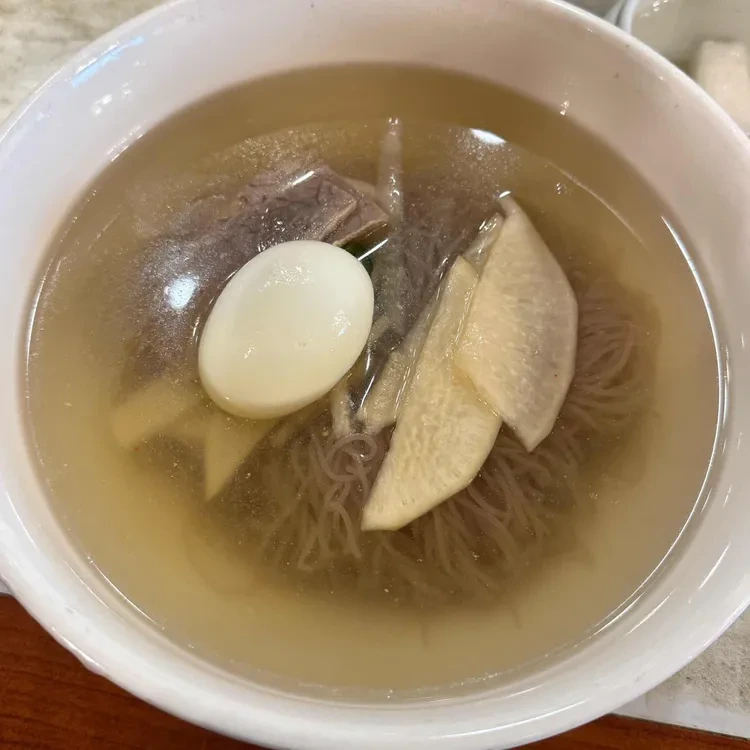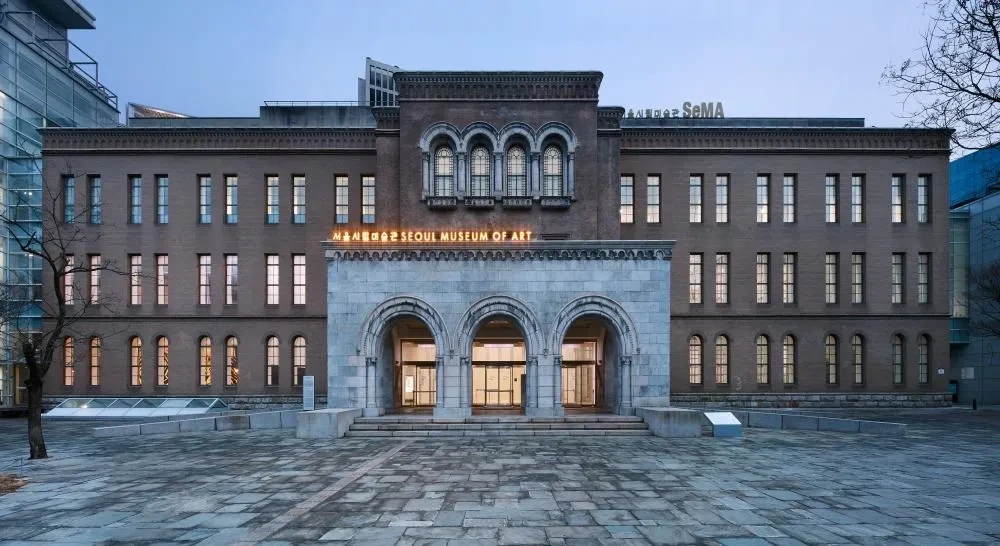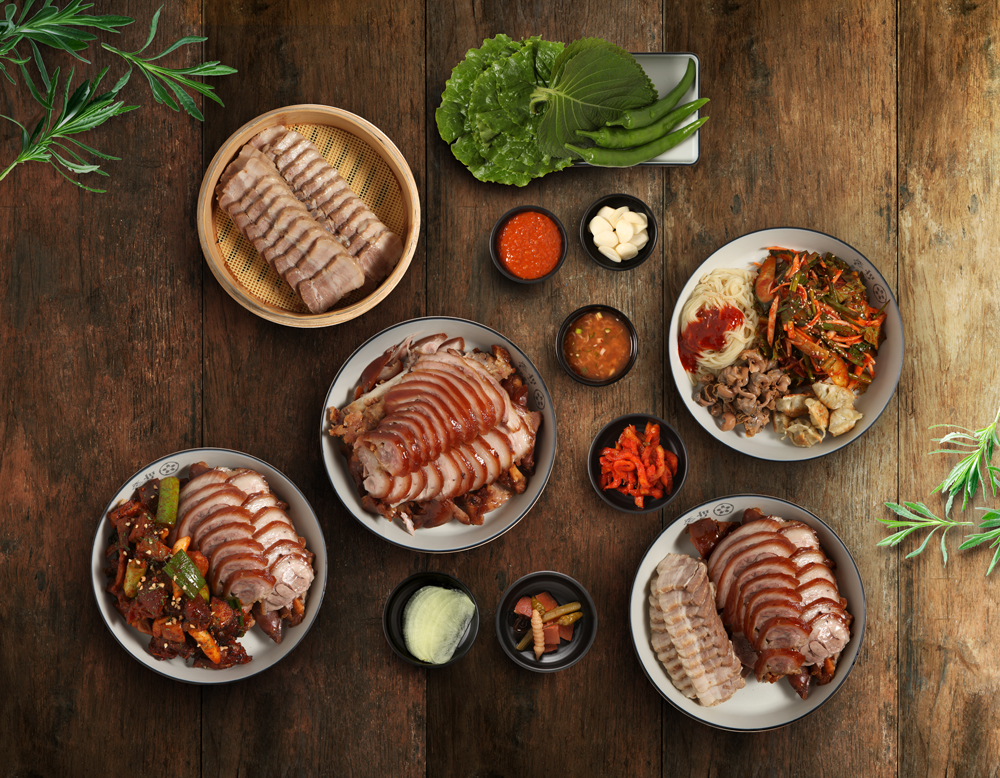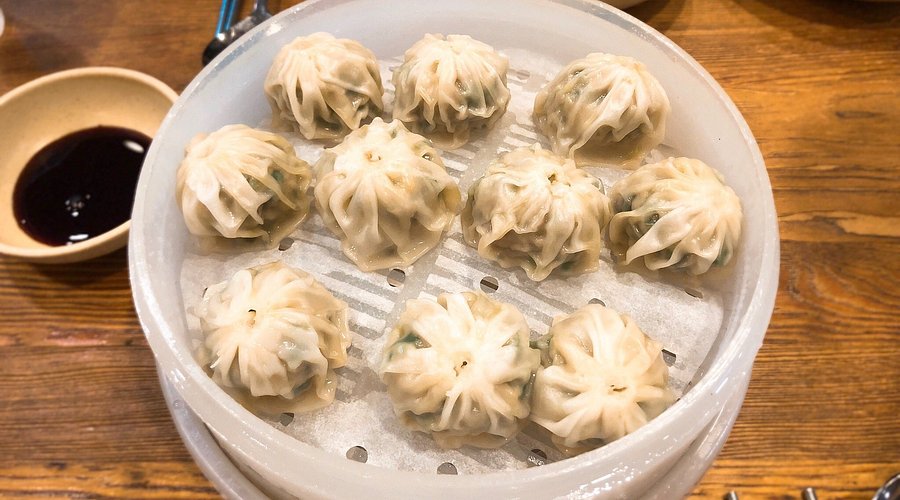Deoksugung Delights: Your Guide to Seoul's Cultural Heart & Culinary Gems (June 2025)
Uncover the vibrant blend of history, art, and authentic Korean flavors around Deoksugung Palace, perfectly curated for your 2025 visit.
Seoul, a dynamic metropolis where ancient traditions seamlessly intertwine with cutting-edge modernity, continues to captivate global travelers. As of June 2025, the area surrounding Deoksugung Palace stands as a prime example of this captivating duality. Recent tourism reports from the Korea Tourism Organization (KTO) indicate a strong rebound in international arrivals, with a particular emphasis on cultural immersion experiences and authentic local dining (KTO, 2024 projections).
This trend highlights a growing desire among visitors to explore not just iconic landmarks but also the surrounding neighborhoods that offer a deeper insight into Korean daily life and culinary heritage. This comprehensive guide is designed to help you navigate the rich tapestry of attractions and gastronomic delights nestled within walking distance of Deoksugung Palace, ensuring an unforgettable journey through one of Seoul's most cherished districts. Discover historical palaces, artistic avenues, and a culinary scene that promises to tantalize your taste buds, all in one accessible location.
Table of Contents
- Exploring Deoksugung's Vicinity: Attractions and Experiences (As of June 2025)
- Why Deoksugung and Its Surroundings Are a Must-Visit (Benefits & Use Cases)
- Latest Trends and Data in Seoul Tourism
- Your Comprehensive Guide to Deoksugung's Best: A Step-by-Step Itinerary
- Frequently Asked Questions (FAQ)
Exploring Deoksugung's Vicinity: Attractions and Experiences (As of June 2025)
Deoksugung Palace, one of Seoul's Five Grand Palaces, uniquely blends traditional Korean architecture with Western-style buildings, reflecting Korea's transitional period during the late 19th and early 20th centuries. Its name, meaning "Palace of Virtuous Longevity," truly embodies its historical significance as a royal residence for various kings, including King Gojong, the last monarch of the Joseon Dynasty. Unlike other palaces, Deoksugung offers a distinct charm, often feeling more intimate and less overwhelming, making it a perfect starting point for your exploration.
Beyond the palace walls, the surrounding area is a treasure trove of cultural and artistic venues. The beautiful Jeongdong-gil (Deoksugung Stone-wall Road) is perhaps one of Seoul's most iconic and romantic walkways, famous for its picturesque autumn foliage. Along this path, you'll discover a host of fascinating sites, including the Seoul Museum of Art (SeMA), the National Museum of Modern and Contemporary Art (MMCA Deoksugung), and the historic Jeongdong Theater. This fusion of historical legacy and contemporary culture provides a rich context for understanding modern Korea, making the Deoksugung area a microcosm of Seoul's identity.
The district is also a hub for governmental and legal institutions, with the Seoul City Hall and the Supreme Court in close proximity, adding to the area's gravitas and unique atmosphere. This blend of royal heritage, modern governance, and artistic expression creates a truly distinctive environment, appealing to history buffs, art enthusiasts, and casual explorers alike. For visitors arriving in June 2025, the pleasant early summer weather makes walking through this district especially enjoyable, perfect for discovering hidden alleys and charming cafes. The accessibility of the area by Seoul's efficient public transport system further enhances its appeal, allowing for seamless transitions between historical explorations and culinary adventures.

Why Deoksugung and Its Surroundings Are a Must-Visit (Benefits & Use Cases)
Visiting the Deoksugung area offers a multi-layered experience that caters to diverse interests, making it an essential stop on any Seoul itinerary. Firstly, it provides unparalleled cultural immersion. Witnessing the Royal Guard Changing Ceremony at Deoksugung, which occurs multiple times daily (except Mondays), is a captivating spectacle that transports visitors back to the Joseon Dynasty. It's a vivid, living history lesson that engages all senses, providing fantastic photo opportunities and a memorable cultural experience.
Secondly, the area excels in its artistic and recreational offerings. The Seoul Museum of Art (SeMA) and the MMCA Deoksugung often host world-class exhibitions, providing a modern counterpoint to the historical surroundings. Strolling down the Deoksugung Stone-wall Road, famous for its romantic atmosphere, is an experience in itself, perfect for a leisurely walk, photography, or simply enjoying the urban scenery. It’s a popular spot for both locals and tourists seeking a peaceful retreat within the bustling city.
Thirdly, the Deoksugung vicinity boasts a phenomenal culinary scene that caters to both traditionalists and those seeking contemporary Korean flavors. From centuries-old eateries specializing in regional dishes to trendy cafes, the food options are as diverse as the attractions. This area allows you to experience authentic Korean cuisine that often flies under the radar of typical tourist traps. For instance, enjoying a bowl of traditional Pyeongyang Naengmyeon or a hearty Gomtang after a morning of sightseeing offers a truly immersive local experience, making it a use case for food enthusiasts seeking genuine flavors.
Lastly, its central location and excellent connectivity via public transportation (City Hall Station serves both Line 1 and Line 2 of the Seoul Subway) make it an incredibly convenient base for exploring other parts of Seoul. You can easily combine a visit to Deoksugung with trips to Myeongdong for shopping, Insadong for traditional crafts, or Gwanghwamun Plaza for grand historical monuments. This strategic positioning maximizes your travel efficiency, allowing you to pack more enriching experiences into your trip without excessive travel time. Whether you're a history buff, an art lover, a foodie, or simply looking for picturesque spots, the Deoksugung area delivers a rich and rewarding experience.
Latest Trends and Data in Seoul Tourism
As we look towards June 2025, several key trends are shaping the tourism landscape in Seoul, particularly around culturally rich areas like Deoksugung. Data from the World Travel & Tourism Council (WTTC) and the Korea Ministry of Culture, Sports and Tourism (MCST) show a strong pivot towards experiential and sustainable travel. Tourists are increasingly prioritizing authentic local experiences over generic sightseeing, with a significant rise in demand for culinary tours, cultural workshops, and interactions with local communities (WTTC Economic Impact Report, 2024 projections). This trend directly benefits areas like Deoksugung, which offer a dense concentration of historical sites, art spaces, and traditional eateries.
Furthermore, digital integration continues to play a pivotal role in travel planning. Tourists are relying heavily on online reviews, social media, and mobile applications for real-time information, navigation, and reservations. As of late 2024, nearly 70% of international tourists to South Korea reported using mobile apps for navigating public transport and finding restaurants (Seoul Tourism Organization Survey, 2024). This underscores the importance of accessible online information and digital services for businesses and attractions in the Deoksugung area.
An emerging trend also points towards the growing popularity of "slow travel" where visitors spend more time in fewer locations to deeply explore a specific district. This encourages a more comprehensive engagement with areas like Deoksugung, allowing travelers to truly soak in the atmosphere, explore hidden gems, and fully enjoy the local food scene rather than just ticking off major landmarks. This shift suggests that visitors in June 2025 will be more inclined to spend an entire day, or even multiple days, in the Deoksugung vicinity, exploring its various facets.
For instance, data from Seoul's major tourist information centers indicate a 15% year-over-year increase in inquiries regarding "traditional food alleyways" and "palace-adjacent dining" in 2023-2024, signaling a robust interest in the very culinary experiences offered around Deoksugung (Seoul Metropolitan Government Tourism Bureau, 2024). This provides concrete evidence that the area's unique blend of cultural attractions and renowned eateries is perfectly aligned with contemporary tourist preferences, solidifying its position as a top destination for those seeking a genuine Seoul experience.
Your Comprehensive Guide to Deoksugung's Best: A Step-by-Step Itinerary
To maximize your experience around Deoksugung Palace in June 2025, here's a meticulously planned itinerary, combining historical exploration with a delightful culinary journey. This guide ensures you experience the best of the area, from its majestic past to its mouth-watering present.
Morning: Palace & Historical Immersion (9:00 AM - 12:00 PM)
Start your day early to fully appreciate the tranquility of Deoksugung Palace before the crowds gather. The palace opens at 9:00 AM. Begin by exploring the traditional Korean structures like Junghwajeon Hall, the main throne hall, and Seokjojeon Hall, a fascinating Western-style building constructed during the Korean Empire. Don't miss the picturesque Jeonggwanheon Pavilion, a unique blend of Korean and Western architectural styles nestled within the garden.
Royal Guard Changing Ceremony: Plan your visit to coincide with this impressive traditional ceremony. It takes place at 11:00 AM, 2:00 PM, and 3:30 PM daily (except Mondays and in bad weather). Arrive at the Daehanmun Gate (main gate) about 15-20 minutes early to secure a good viewing spot. This colorful spectacle, complete with traditional costumes and instruments, is a highlight and provides excellent photo opportunities. It's an authentic glimpse into the ceremonial past of the Joseon Dynasty, meticulously recreated for public viewing.

Lunch: A Culinary Journey (Part 1: Naengmyeon & Gomtang) (12:00 PM - 1:30 PM)
After your morning of historical exploration, it’s time to savor some authentic Korean flavors. The Deoksugung area is renowned for its traditional eateries.
Nampomyeonok (남포면옥)

Nampomyeonok is a legendary restaurant, established in 1954, famous for its Pyeongyang Naengmyeon (평양냉면), a North Korean-style cold noodle dish. Located just a short walk from Deoksugung, this establishment offers a taste of culinary history. The Naengmyeon here is characterized by its clear, subtle beef broth, buckwheat noodles, and minimal toppings, reflecting the authentic Pyeongyang style. It's a surprisingly refreshing and deeply flavorful dish, especially perfect for a warm June day. Beyond Naengmyeon, their Mandu (dumplings) and Bulgogi are also highly recommended. The interior is traditional, often bustling with locals, offering a true slice of Korean dining culture. Expect a clean, simple, and focused menu, a hallmark of traditional establishments.
- Address: 11-4, Euljiro 3-gil, Jung-gu, Seoul (서울 중구 을지로3길 11-4)
- Operating Hours: Typically 11:30 AM - 9:30 PM (verify current hours for 2025).
- Must-try: Pyeongyang Naengmyeon, Eobok Jaengban (boiled beef slices).
Hadongkwan (하동관)

For those craving something warm and hearty, Hadongkwan is an institution. Established in 1939, it has been serving its signature Gomtang (곰탕), a rich and nourishing beef bone soup, for generations. The menu is incredibly simple: Gomtang in various sizes. You choose between regular and special (which includes more meat and tripe). The broth is milky white, slow-cooked to extract maximum flavor from the beef bones, and typically served with rice already mixed in. Patrons often season it to their liking with salt, pepper, and finely chopped green onions provided on the table. It's the ultimate comfort food, especially revitalizing after a long walk, and epitomizes culinary dedication through simplicity. The dining experience is quick, efficient, and deeply authentic.
- Address: 10-4, Myeongdong 9-gil, Jung-gu, Seoul (서울 중구 명동9길 10-4) - (Note: The main branch is in Myeongdong, but it's easily accessible from Deoksugung).
- Operating Hours: Typically 7:00 AM - 4:00 PM (they close when ingredients run out).
- Must-try: Gomtang (choose regular or special).
Afternoon: Art, Culture & Scenic Strolls (1:30 PM - 5:00 PM)
Post-lunch, immerse yourself in the artistic and serene side of the Deoksugung area.
Seoul Museum of Art (SeMA): Located just outside Deoksugung's main entrance, SeMA (서울시립미술관) is a modern art museum housed in a beautiful building that was once the Supreme Court. It hosts diverse exhibitions, often featuring contemporary Korean and international artists. Check their website for current exhibitions during your June 2025 visit. It offers a refreshing shift from traditional history to modern artistic expression.
Jeongdong-gil (Deoksugung Stone-wall Road): This scenic pathway, often dubbed "the most beautiful road in Korea," is perfect for a leisurely stroll. The path winds along the outer wall of Deoksugung, leading to various historical buildings and cultural institutions. It's particularly enchanting, offering peaceful moments amidst the city's hustle. Along the way, you’ll encounter the Jeongdong Theater, Korea's first modern theater, which often stages traditional performances. Even if you don't attend a show, admiring its architecture and understanding its historical significance is worthwhile.
Seoul City Hall Plaza: Just across from Deoksugung, this large grassy plaza is a vibrant public space where locals gather, especially during warmer months. It often hosts events, concerts, and exhibitions. Take a moment to appreciate the modern design of the new City Hall building, which stands in stark contrast to the historical palace, symbolizing Seoul's progressive spirit. It’s a great spot for people-watching and experiencing the everyday rhythm of Seoulites.

Dinner: A Culinary Journey (Part 2: Jokbal & Kalguksu) (6:00 PM - 8:00 PM)
As evening approaches, the area around Deoksugung transitions into a vibrant dining destination. Here are two more exceptional choices for dinner, offering distinctly different but equally satisfying Korean culinary experiences.
Manjok Ohyang Jokbal (만족오향족발)

For a quintessential Korean comfort food experience, head to Manjok Ohyang Jokbal. This restaurant is celebrated for its Jokbal (족발), which are braised pig's trotters. What sets Manjok Ohyang Jokbal apart is their unique five-spice (Ohyang) broth used for braising, resulting in incredibly tender, flavorful, and aromatic meat. The Jokbal is typically served thinly sliced with various accompaniments, including a signature garlicky sauce, fresh vegetables, and Ssamjang (a spicy dipping sauce). It’s common to wrap the meat in lettuce or perilla leaves with garlic, chili, and ssamjang for a delightful mouthful. The restaurant is popular among locals and tourists alike, often buzzing with lively conversation. It's a fantastic place to enjoy a hearty meal with Makgeolli (Korean rice wine) or Soju, making it perfect for a social dinner experience.
- Address: 130-18, Seosomun-ro, Jung-gu, Seoul (서울 중구 서소문로 130-18) - City Hall Branch.
- Operating Hours: Typically 12:00 PM - 10:00 PM (verify current hours for 2025).
- Must-try: Ohyang Jokbal, Boiled Dumplings (service dish).
Myeongdong Kyoja (명동교자)

While technically in Myeongdong, Myeongdong Kyoja is very close to the Deoksugung area and offers a culinary experience that cannot be missed. This iconic restaurant is famous for two main dishes: Kalguksu (칼국수) (handmade knife-cut noodles in a rich, savory broth) and Mandu (dumplings). Their Kalguksu broth is incredibly flavorful, often with a slight garlic kick, and comes topped with minced meat and four perfectly steamed dumplings. The Mandu are large, juicy, and packed with pork and vegetables. What truly sets Myeongdong Kyoja apart is their incredibly potent and addictive garlic kimchi, which is served freely and replenished as often as you like. Be warned, it’s spicy but perfectly complements the mild Kalguksu. The restaurant operates with high efficiency, serving large volumes of customers daily, ensuring a consistent and delicious meal every time. It’s a bustling, no-frills environment focused purely on excellent food.
- Address: 29 Myeongdong 10-gil, Jung-gu, Seoul (서울 중구 명동10길 29) - Myeongdong Main Branch.
- Operating Hours: Typically 10:30 AM - 9:30 PM (verify current hours for 2025).
- Must-try: Kalguksu, Mandu (dumplings), and their legendary kimchi.
Evening: Relaxation & Reflection (8:00 PM onwards)
After a day of extensive exploration and delicious food, wind down with a final stroll or a relaxing coffee. The Deoksugung Stone-wall Road is beautiful at night, with subtle lighting creating a serene atmosphere. You might also find quaint cafes tucked away in the alleys of Jeongdong, perfect for a cup of tea or coffee, reflecting on your day's adventures. This area offers a unique tranquility after dark, a pleasant contrast to the daytime bustle, allowing for a peaceful end to your immersive experience in Seoul's cultural heart.
Frequently Asked Questions (FAQ)
- Is Deoksugung easily accessible by public transport?Absolutely! Deoksugung Palace is exceptionally well-connected. The easiest way to reach it is by taking the Seoul Subway to City Hall Station (시청역), which serves both Line 1 and Line 2. From there, Exit 2 or 3 will lead you directly to the palace's main gate (Daehanmun Gate) or the start of the Deoksugung Stone-wall Road within a 1-2 minute walk. This makes it incredibly convenient for visitors from all parts of Seoul.
- What's the best time to visit Deoksugung?While Deoksugung is beautiful year-round, June 2025 offers pleasant early summer weather, making it ideal for exploring both indoor and outdoor attractions. To avoid crowds, especially for the Royal Guard Changing Ceremony, aim to arrive right at opening (9:00 AM) or visit mid-afternoon. If you want to see the Guard Changing Ceremony, arrive at least 15-20 minutes before 11:00 AM, 2:00 PM, or 3:30 PM. The palace is closed on Mondays.
- Are the recommended restaurants vegetarian-friendly?Traditional Korean cuisine, especially the dishes mentioned (Naengmyeon, Gomtang, Jokbal, Kalguksu), often heavily feature meat or meat broth. While Nampomyeonok and Myeongdong Kyoja might have some vegetable-based side dishes or Mandu options, their signature dishes are meat-based. Hadongkwan and Manjok Ohyang Jokbal are almost entirely focused on beef bone soup and pig's trotters, respectively. Vegetarian travelers might find limited options at these specific establishments and may need to seek out restaurants specializing in vegetarian Korean dishes like Bibimbap (without meat), Tofu Stew (Sundubu Jjigae), or temple cuisine in other areas of Seoul.
- How much time should I allocate for visiting Deoksugung and its vicinity?To thoroughly explore Deoksugung Palace, enjoy the Royal Guard Changing Ceremony, visit one or two museums (like SeMA or MMCA Deoksugung), stroll along the Stone-wall Road, and enjoy two meals (lunch and dinner) at the recommended eateries, you should allocate a full day (6-8 hours). If you're short on time, a half-day (3-4 hours) can cover the palace and a quick meal, but you'll miss out on some of the surrounding cultural gems.
- Are there any special events at Deoksugung in June 2025?Deoksugung Palace often hosts special cultural events, exhibitions, and traditional performances throughout the year, especially during warmer months. As of June 2025, specific event schedules will be announced closer to the date. We recommend checking the official Cultural Heritage Administration of Korea website or the Seoul Tourism Organization website (https://english.visitseoul.net/) a few weeks before your trip for the most up-to-date information on any special programs or festivals occurring during your visit.
"Seoul is not merely a city; it is a living museum, where every street tells a story, and every dish is a chapter of its rich heritage." - A recent travel blogger on Seoul's allure.
Explore more of Seoul: For an even deeper dive into Seoul's royal history, check out our guide on The Essential Guide to Seoul's Five Grand Palaces. If you're passionate about uncovering local culinary secrets beyond the Deoksugung area, our post on Discovering Seoul's Hidden Food Alleys offers more mouth-watering recommendations. We aim to provide only verified information, sourcing data from reputable institutions such as the Korea Tourism Organization and the Seoul Metropolitan Government.
Conclusion
The Deoksugung Palace area, with its unique blend of historical grandeur, artistic vibrancy, and authentic culinary delights, offers an unparalleled experience for any visitor to Seoul. As of June 2025, it remains a testament to South Korea's rich heritage and dynamic present, providing a microcosm of the city's diverse appeal. From witnessing centuries-old royal ceremonies to savoring traditional dishes passed down through generations, your journey through this district promises to be both enriching and deliciously memorable. We hope this comprehensive guide inspires your next adventure and helps you unlock the hidden charms and renowned flavors of Deoksugung and its surrounding neighborhood.
If you found this guide helpful, please share it with fellow travelers planning their trip to Seoul! Your comments and questions are always welcome below, and don't forget to subscribe to our newsletter for more curated travel insights and tips for exploring Korea. Happy travels!



